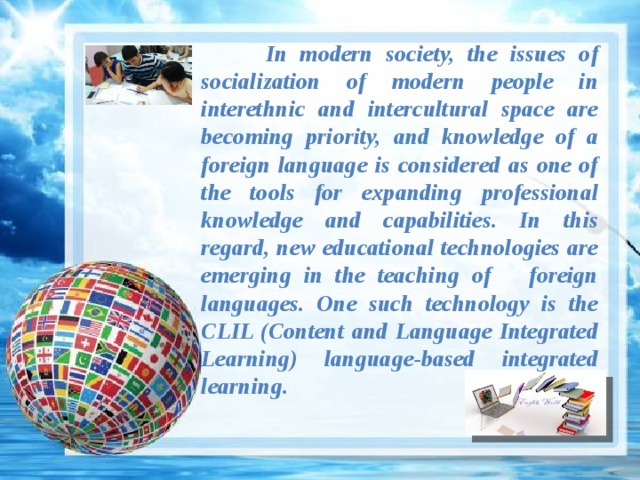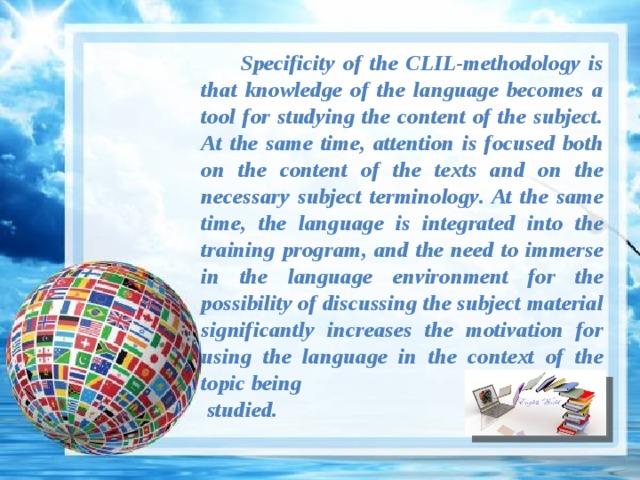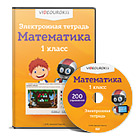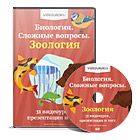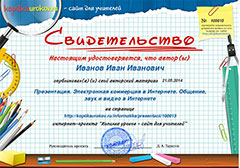Презентация и внедрении методики CLIL в образовательный процесс. Об истории появления данного термина.
Создайте Ваш сайт учителя Видеоуроки Олимпиады Вебинары для учителей
"CLIL (Content and Language Integrated Learning )"
Вы уже знаете о суперспособностях современного учителя?
Тратить минимум сил на подготовку и проведение уроков.
Быстро и объективно проверять знания учащихся.
Сделать изучение нового материала максимально понятным.
Избавить себя от подбора заданий и их проверки после уроков.
Наладить дисциплину на своих уроках.
Получить возможность работать творчески.
Просмотр содержимого документа
«"CLIL (Content and Language Integrated Learning )"»
Похожие файлы
Полезное для учителя
Распродажа видеоуроков!
1760 руб.
2930 руб.
1520 руб.
2530 руб.
1670 руб.
2780 руб.
1690 руб.
2820 руб.
ПОЛУЧИТЕ СВИДЕТЕЛЬСТВО МГНОВЕННО
* Свидетельство о публикации выдается БЕСПЛАТНО, СРАЗУ же после добавления Вами Вашей работы на сайт
Удобный поиск материалов для учителей
Проверка свидетельства

